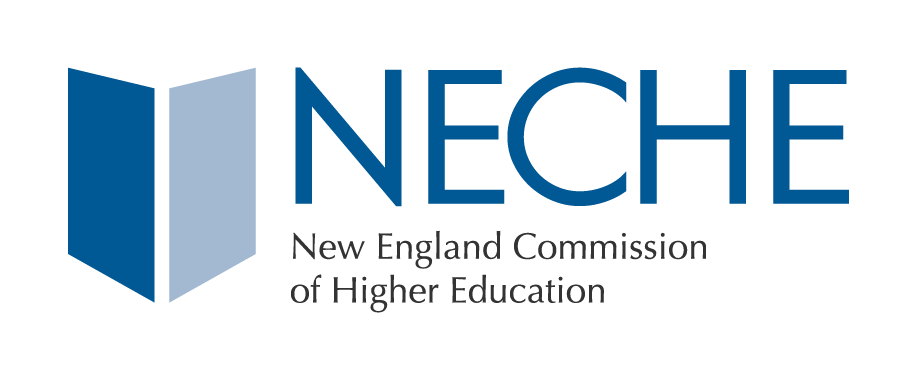
I suspect that most readers of this blog have, at some point in their lives, visited the American Museum of Natural History (AMNH) in New York City. As parents, we lassoed our young kids and brought them to this world-famous dazzler of a museum – a family ritual shared by millions, leaving vivid memories that linger for decades. I also suspect that almost none of us (including me) knew that since 2006, the American Museum of Natural History has been home to a pioneering Ph.D.-granting program in the Richard Gilder Graduate School (RGGS). It’s also home to a Master of Arts (MAT) in Teaching Earth Science Residency Program.

Those degree-granting programs are NECHE’s connection to AMNH and the reason for my recent visit. The Richard Gilder Graduate School– like the three institutions we recently visited (Rockefeller University, Cold Spring Harbor Lab, and Gerstner Sloan Kettering)– is in the process of moving its accreditation from the New York State Board of Regents to the New England Commission.
The American Museum of Natural History was founded in 1869 and has been a world leader in the natural sciences since its inception. Among early supporters were Theodore Roosevelt Sr. and J. Pierpont Morgan. The cornerstone for its first building was laid by President Grant, and President Hayes presided over the public ceremony upon the building’s opening. For more than a century, the museum has played a leading role in the exploration, discovery, and theoretical advances in the natural sciences, investigating the origins and evolution of life on earth, and the complex processes that have formed and continue to shape our planet and the universe beyond.

Today, the Museum and its 175 scientists have expanded that research into areas as widely varied as anthropology, microbiology, genomics, and astrophysics. Central to these efforts has been the accumulation of one of the world’s most important museum collections: 34 million specimens and artifacts; terabytes of astronomical, geological and biological data; and one of the great natural history library collections in the world—all of which serve as an invaluable resource for the international scientific community.



My visit to the American Museum of Natural History was hosted by Dean John Flynn, who also doubles as Professor and Curator in the Division of Paleontology. When I asked John how he first became interested in that field, he recalled a course early in his college career (“Rocks for Jocks”) that scuttled his plans to major either in English or Biology and marked the beginning of a spectacular and fascinating career that has taken him to the literal ends of the earth–and to the Field Museum in Chicago before he was recruited to join AMNH in 2004. Several years later, he became the inaugural Dean of the Richard Gilder Graduate School (RGGS), of which he is deservedly very proud.

The RGGS Ph.D. program admits a typical cohort of 4-5 students a year, while the Master of Arts (MAT) in Teaching Earth Science Residency Program includes about 20 students in each cohort. Half of all new Earth Science teachers in the New York Public School system are graduates of Gilder’s inspired MAT program. And the Doctor of Philosophy in Comparative Biology was the first Ph.D. degree-granting program to be offered by a museum in the Western Hemisphere. Of course, AMNH has a long history of making history in all its endeavors.


Through the years, museum staff and students have developed new theories in biology, the history of life, and cultural understanding. From guiding the emergence of modern anthropology to refashioning Darwin’s evolutionary theory, and fomenting a revolution in the field of systematics to exploring comparative molecular genetics, AMNH has significantly transformed research approaches in everything from paleontology to evolutionary biology. The Museum and its affiliates’ history includes some of the greatest names in anthropology and the natural sciences, including Margaret Mead (South Pacific), Franz Boas (North Pacific, including an expedition that revealed links between Native American and Asian peoples), dinosaur hunters Barnum Brown (India-Burma) and Roy Chapman Andrews (Central Asia); polar explorers Robert Peary and Lincoln Ellsworth; naturalist explorers Carl Akeley (mountain gorillas of Africa) and Theodore Roosevelt, Jr. (Brazilian rainforest). In fact, AMNH still sponsors over 100 expeditions each year and continues to add to its collection in significant ways. However, 98% of the collection is not on display but used for the purposes of ongoing research by scientists, post-docs, and graduate students, both at RGGS and other colleges and universities.


Education has always been at the heart of the mission of AMNH, sponsoring a wealth of science programs for all audiences, from youngest to oldest. Graduate training is fully embraced by the Museum’s mission and is a vital and defining characteristic of the institution, preparing the essential next generation of researchers, teachers, and policy-makers both in the United States and worldwide. In partnership with a select group of university partners (including Columbia University since the 1890s, and more recently with City University of New York, Cornell University, New York University, and Stony Brook University), AMNH leads some of the oldest and largest alliances in graduate education.
NECHE is proud to be associated with iconic institutions like the American Museum of Natural History, and we can’t wait for our return visit to learn more about their students and scientists. And of course, to say hello to the whale again!


